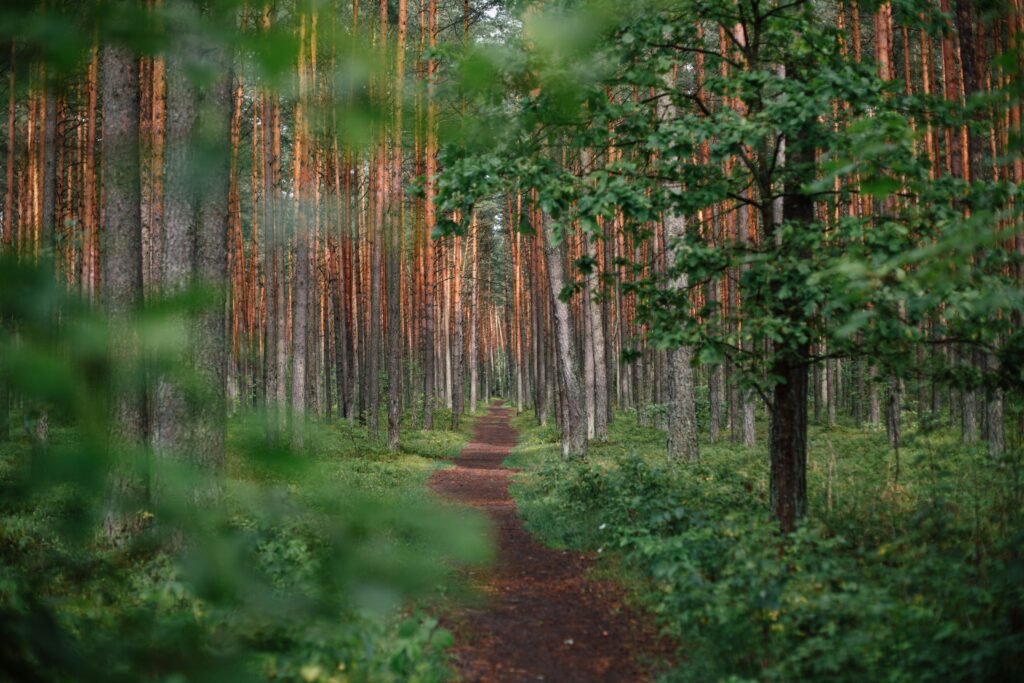
Mindaugas Lapelė. Photo: Romas Sadauskas
21 May marks the day of Natura 2000, the most ambitious and far-reaching initiative to preserve Europe’s natural heritage. The date was chosen because the European Union (EU) Habitats Directive was adopted on 21 May 1992. Together with the EU Birds Directive adopted in 1979, this Directive provides the legal basis for the establishment of the Natura 2000 network of Special Protection Areas in all Member States. They make an important contribution to the conservation of Europe’s most valuable natural habitats and plant and animal species.
Dr Mindaugas Lapelė, a long-time botanist of Dzūkija National Park and co-founder of the Sengirė Foundation, said that the process of designating sites in Lithuania and assessing the status of habitats started even before the country’s accession to the EU. “Ornithologists were the best prepared – almost immediately after Lithuania joined the EU, sites of importance for bird conservation were established. But the implementation of the Habitats, Wildlife and Natural Habitats Directive (or Habitats Directive) was delayed. It turned out that we did not know much about the quantity and condition of habitats at that time, and had little information about the distribution of species,” he said.
According to Dr Lapelė, nature conservation was not taken seriously, so not enough resources were allocated to implement commitments and decision-making was constantly postponed. One of the mistakes made in the past, he said, was the failure to make full use of the results of the inventory of habitats of EU importance carried out between 2011 and 2014. “The inventory was considered to be a scientific study, while it was used to determine how many and which habitats we should protect. Even after it was over, the forests of the communities to be protected were leaving Lithuania in the form of logs,” he said.
However, it is important to note that the network of habitats has expanded considerably in the last 6 years. Currently, the Natura 2000 network in Lithuania consists of 711 sites (85 sites of importance for bird conservation and 626 sites of importance for habitat conservation), covering 15 percent of the country’s continental territory and accounting for as much as 75 percent of Lithuania’s total area of protected areas. Not all previously designated Sites of Importance for Habitat Conservation have yet gone through the full alignment process with the European Commission, but this is expected to be completed by 2024.

Photo: Unsplash.com
Is it possible to improve the situation?
Habitats can always be improved, but it just takes time, said Dr Lapelė. On forest habitats, he missed the example set by the state: “State forests are an asset for all of us. Not only do we face the importance of enforcing the Habitats and Birds Directives, but the EU Biodiversity Strategy also stipulates that around 30% of the country’s territory should be protected by 2030, and 10% should be strictly protected. And yet, we seem to be in a hurry to sweep away the last of the old forests. It is a pity that the timber industry and the interests of private forest owners are becoming the priorities, while nature is of little concern to anyone.
He recalled that this year another value – the traditional relationship between man and forest – was added to the list of intangible cultural heritage values. “Sceptics used to say – there are no more forests, nobody kisses the first rowan tree when they go to the forest anymore, but this relationship has not disappeared. It just manifests itself in different forms: one person loves wood in the forest more, another cares more about plants, animals, mushrooms, and a third maybe associates the forest with a chance to rest, to rebuild”.
He said that the public’s mobilisation and active opposition to logging is one of the expressions of love for the forest: “The Sengirė Foundation was born out of a desire to preserve the forest. Although it cannot keep many forests intact because it is limited by legislation and human resources, it is an example. The nature-oriented organisations that came together more than a year ago to form the “Girių spiečius” are becoming a beacon of light. As the saying goes, it’s easy to break one broom, but it takes effort to break the whole broom… Similarly, Natura 2000 sites used to be little known, but over the years their name has become more and more prominent.

Mindaugas Lapelė. Photo: Greta Valvonytė
We tend to overestimate nature’s capacity to recover
According to botanist Dr. Lapelė, there is often an attitude of “let’s cut it down, let’s plant it, let it grow, let it recover”. “We overestimate nature’s ability to regenerate. It will recover, but perhaps it will recover in a different way than it was. Moreover, even if nature is able to recover, it is also very fragile – some things cannot be rebuilt later,” he said.
He mentionedthat in order to reach a consensus and to achieve the goals we set out to achieve, we first need to agree on what a forest is. “We use the same word, but for one it is timber and for the other it is a complex system which, unfortunately, is cut down as soon as it reaches maturity and its great diversity begins to emerge.”
“If everything is cut down in a chess-like order, then there is nowhere to come from. Here is the biggest problem. Often it is tried to be presented that environmentalists, nature conservationists are totally against logging. That is not the case, but it is a question of proportion – how much we leave to nature and how much we use intensively. The proposals of the Environmental Coalition, which are supported by over 30 organisations of the ‘Girių spiečius’, aim for 50% of forests to be used for farming, 30% for conservation, 20% for recreation and so on. If this could be achieved, forests could become more resilient”.
At the end of the conversation, we discussed another interesting aspect. On the one hand, people are opposed to deforestation and forest degradation, but at the same time, they are often afraid that only a protected area will be declared where they live. Asked if he had ever met people whose thinking was so contradictory, he replied in the affirmative. He pointed out that to a large extent, the establishment of protected areas is hampered by poor communication, stereotypes and prejudiced attitudes.
“For me, the most important thing is to increase the number of protected areas and to farm them differently, bearing in mind that we have a responsibility not only to the EU but also to our children,” he said.
Funded by the European Union LIFE programme. The contents of this publication are the sole responsibility of and do not necessarily reflect the opinion of the European Union.
